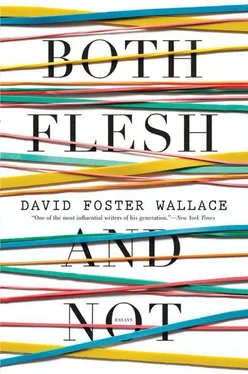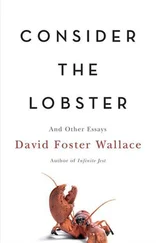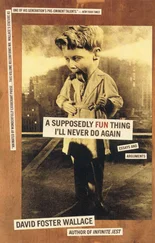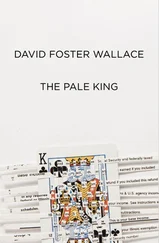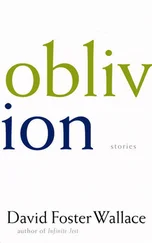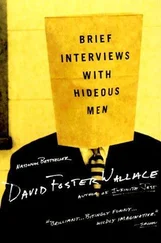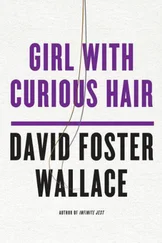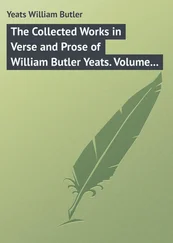I’m worried lest I sound too much like B. Tuchman here, because my complaints about trash are different from hers, and less sophisticated. My complaint against trash fiction is not that it’s plebeian, and as for its rise I don’t care at all whether post-industrial liberalism squats in history as the culprit that made it inevitable. My complaint against trash isn’t that it’s vulgar art, or irritatingly dumb art, but that, given what makes fiction art at all, trash is simply unreal, empty —and that (aided by mores of and by TV) it seduces the market writers need and the culture that needs writers away from what is real, full, meaningful.
Even the snottiest young artiste, of course, probably isn’t going to bear personal ill will toward writers of trash; just as, while everybody agrees that prostitution is a bad thing for everyone involved, few are apt to blame prostitutes themselves, or wish them harm. If this seems like a non sequitur, I’m going to claim the analogy is all too apt. A prostitute is someone who, in exchange for money, affords someone else the form and sensation of sexual intimacy without any of the complex emotions or responsibilities that make intimacy between two people a valuable or meaningful human enterprise. The prostitute “gives,” but — demanding nothing of comparable value in return — perverts the giving, helps render what is supposed to be a revelation a transaction. The writer of trash fiction, often with admirable craft, affords his customer a narrative structure and movement, and content that engages the reader — titillates, repulses, excites, transports him — without demanding of him any of the intellectual or spiritual or artistic responses that render verbal intercourse between writer and reader an important or even real activity. So when our elders tell our graduate fiction class (as they liked to do a lot) that a war for fictional art’s soul is being waged in the 1980s between poetry on one side and trash on the other — to this admonishment we listen, at this we take pause. Especially when television and advertising have conditioned us to equate net worth with human worth. Sidney Sheldon, a gifted trash-master, owns jets; more people in this country write poetry than read it; the annual literary budget of the National Endowment for the Arts is less than a third of the U.S.’s yearly expenditures on military bands, less than a tenth of the three big networks’ yearly spending on Creative Development.
Sidney Sheldon, by the way, was the Creative, Developing force behind both I Dream of Jeannie and Hart to Hart. Oprah Winfrey asks him in admiration for the secret behind his success in “two such totally different media.” I say to myself, “Ha,” watching.
It’s in terms of economics that academic Creative Writing Programs 2up your alley offer their least ambiguous advantages. Published writers (assuming they themselves have a graduate writing degree) can earn enough by workshop teaching to support themselves and their own fiction without having to resort to more numbing or time-consuming employment. On the student side, fellowships — some absurdly generous — and paid assistantships in teaching are usually available to almost all students. Programs tend to be a sweet deal.
And there are more such programs in this country now than anywhere anytime before. The once-lone brow of the Iowa Workshop has birthed first-rate creative departments at places like Stanford, Houston, Columbia, Johns Hopkins, Virginia, Michigan, Arizona, etc. The majority of accredited American I.H.E.s now have at least some sort of formal academic provision for students who want vocational training in fiction writing. This has all happened within the last fifteen years. It’s unprecedented, and so are the effects of the trend on young U.S. fiction. Of the C.Y. writers I’ve mentioned above, I know of none who’ve not had some training in either a graduate or undergraduate writing department. Most of them hold M.F.A.s. Some are, even as we speak, working toward a degree called a “Creative Ph.D.” Never has a “literary generation” been so thoroughly and formally trained, nor has such a large percentage of aspiring fiction writers eschewed extramural apprenticeship for ivy and grades.
And the contributions of the academy’s rise in American fiction go beyond the fiscal. The workshop phenomenon has been justly credited with a recent “renaissance of the American short story,” a renaissance heralded in the late seventies with the emergence of writers like the late Raymond Carver (taught at Syracuse), Jayne Anne Phillips (M.F.A. from Iowa), and the late Breece Pancake (M.F.A. from Virginia). More small magazines devoted to short literary fiction exist today than ever before, most of them either sponsored by programs or edited and staffed by recent M.F.A.s. Short story collections, even by relative unknowns, are now halfway viable economically, and publishers have moved briskly to accommodate trend.
More important for young writers themselves, programs can afford them time, academic (and parental!) legitimacy, and an environment in which to Hone Their Craft, Grow, Find Their Voice, 3etc. For the student, a community of serious, like-minded persons with whom to exchange ideas has pretty clear advantages. So, in many ways, does the fiction class itself. In a workshop, rudiments of technique and process can be taught fairly quickly to kids who might in the past have spent years in New York lofts learning basic tricks of the trade by trial and error. A classroom atmosphere of rigorous constructive criticism helps toughen young writers’ hides and prepare them for the wildly disparate responses the world of real readers holds in store. Best of all, a good workshop forces students regularly to formulate consistent, reasoned criticisms of colleagues’ work; and this, almost without fail, makes them far more astute about the strengths and weaknesses of their own fiction.
Still, I think it’s the Program-sword’s other edge that justifies the various Establishments’ present disenchantment with C.Y. fiction more than anything else. The dark side of the Program trend exists, grows; and it’s much more than an instantiation of the standard academic lovely-in-theory-but-mangled-in-practice conundrum. So we’ll leave aside nasty little issues like departmental politics, faculty power struggles that summon images of sharks fighting for control of a bathtub, the dispiriting hiss of everybody’s egos in various stages of inflation or deflation, a downright unshakable publish-or-perish mentality that equates appearance in printe ance int with talent or promise. These might be particular to one student’s experience. Certain problems inherent in Programs’ very structure and purpose, though, are not. For one thing, the pedagogical relation between fiction professor and fiction student has unhealthiness built right in. Writing teachers are by calling writers, not teachers. The fact that most of them are teaching not for its own sake but to support a separate and obsessive calling has got to be accepted, as does its consequence: every minute spent on class and department business is, for Program staff, a minute not spent working on their own art, and must to a degree be resented. The best teachers seem to acknowledge the conflict between their vocations, reach some kind of internal compromise, and go on. The rest, according to their capacities, either suppress the resentment or make sure they do the barely acceptable minimum their primary source of income requires. Almost all, though, take the resentment out in large part on the psyches of their pupils — for pupils represent artistic time wasted, an expenditure of a teacher’s fiction-energy without fiction-production. It’s all perfectly understandable. Clearly, though, feeling like a burden, an impediment to real art-production, is not going to be conducive to a student’s development, to say nothing of his enthusiasm. Not to mention his basic willingness to engage his instructor in the kind of dynamic back-and-forth any real creative education requires, since it’s usually the very-low-profile, docile, undemanding student who is favored, recruited, supported, and advanced by a faculty for whom demand equals distraction.
Читать дальше
